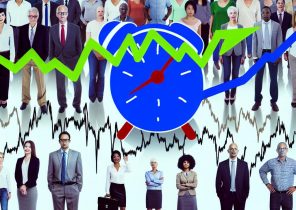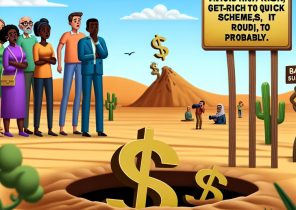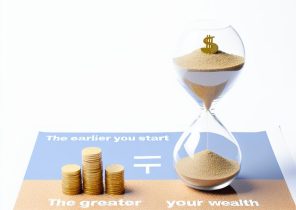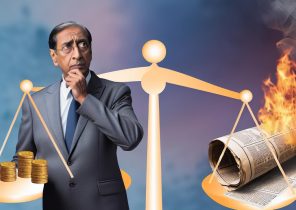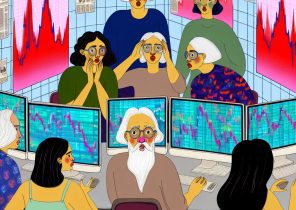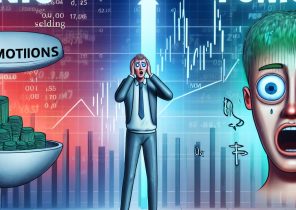Understanding Inflation
Inflation is a pivotal concept in economics that describes the rate at which the general level of prices for goods and services increases, which in turn leads to a decline in the purchasing power of currency. This economic phenomenon is observed and quantified using key indicators like the Consumer Price Index (CPI) and the Producer Price Index (PPI). These indices reflect changes in the price of a basket of goods and services over time. A rising inflation rate signifies a diminishing value of currency, meaning that with a set amount of money, one can buy fewer goods and services than before.
Factors Influencing Inflation
Several factors contribute to inflation, each rooted in distinct economic mechanisms. Among these factors are demand-pull conditions, cost-push scenarios, and inflation expectations that become self-fulfilling.
Demand-pull inflation is a type of inflation that occurs when the demand for goods and services in an economy exceeds the economy’s capacity to produce them. This imbalance generates pressure that drives prices upward. Factors causing this type of inflation can include increased consumer spending, government fiscal policies that stimulate the economy, and favorable financial conditions that boost investment.
Cost-push inflation, on the other hand, is closely linked to an increase in production costs, which businesses then pass on to consumers in the form of higher prices. Such inflation can result from increases in wages, rising prices for raw materials, or supply chain disruptions. A common example could be the increase in oil prices leading to heightened transportation costs, thereby affecting the prices of goods and services across various sectors.
Lastly, built-in inflation occurs when there is an expectation of future price rises. This foresight prompts businesses and employees to adjust current prices and wages, perpetuating further inflationary trends. For example, if workers expect future inflation, they may demand higher wages now, prompting employers to raise prices to maintain profit margins.
Interest Rates and Their Impact
Interest rates play a fundamental role in an economy, largely setting the cost of borrowing. These rates are primarily managed by central banks, which use them as a tool to regulate economic activity. By adjusting interest rates, central banks influence consumer spending and investment, ultimately controlling the pace at which an economy grows or contracts. In the United States, for example, the Federal Reserve oversees this process, using interest rates to guide monetary policy decisions.
The Relationship Between Interest Rates and Inflation
The interconnection between interest rates and inflation is significant, creating a dynamic where each influences the other. Central banks may decide to raise interest rates to combat high inflation, as higher rates increase the cost of borrowing. When borrowing becomes more expensive, consumers and businesses are less likely to take loans for spending and investment purposes, leading to a cooling-off of demand and, consequently, inflation.
Conversely, during periods of economic stagnation or deflation, central banks might opt to lower interest rates. Reduced borrowing costs can encourage more spending and investment, stimulating economic growth. This approach might be used to counteract low inflation or even deflationary pressures, though it raises the risk of sparking a new cycle of inflation.
Gross Domestic Product (GDP) Insights
Gross Domestic Product (GDP) serves as a primary gauge of economic performance, encompassing the total market value of all final goods and services produced within a country over a particular period, usually a year or a quarter. GDP provides a comprehensive snapshot of a nation’s economic health and growth, offering insights into the overall economic trajectory and standard of living within a country.
Components of GDP
GDP is made up of four key components that together depict a detailed picture of economic activity:
Consumption is the largest component, often driving GDP growth. It encompasses all expenditures made by households on goods and services, ranging from food and clothing to healthcare and leisure.
Investment refers to spending on capital goods like buildings, machinery, and infrastructure, which are used for future production. This component also includes investments in residential construction and changes in business inventories.
Government Spending covers government expenditures on goods and services that contribute to economic activity, such as public sector salaries, defense, infrastructure, and education. However, it excludes transfer payments like pensions and unemployment benefits, as these are not payments for goods or services.
Net Exports is calculated as the difference between the value of a nation’s exports and imports. A positive net export indicates a trade surplus, while a negative value indicates a trade deficit.
The Interconnection of Economic Trends
Understanding how inflation, interest rates, and GDP are interconnected is crucial for grasping broader economic contexts and dynamics. These elements are not isolated; rather, they operate in tandem, each exerting influence on the others.
For instance, persistently high inflation is likely to prompt central banks to increase interest rates, aiming to restore monetary stability. On the other hand, a burgeoning GDP, as a sign of robust economic performance, could foster inflationary pressures if growth leads to demand outpacing supply.
Staying Informed
Monitoring economic trends and changes requires vigilance and a proactive approach to accessing reliable information sources. Economic indicators like the Consumer Price Index (CPI), Producer Price Index (PPI), and GDP reports are vital tools for those seeking to understand the current economic climate. Government reports, alongside updates from central banks, provide insights into policy shifts and economic forecasts.
Additionally, financial news platforms serve as critical resources for obtaining expert analyses and interpretations of complex economic phenomena. Platforms like Bloomberg and other economic sections offer analyses that can help individuals and businesses navigate the complexities of economic trends. By staying informed, stakeholders can make better decisions that align with broader economic conditions and anticipate potential challenges or opportunities ahead.
This article was last updated on: September 1, 2025

